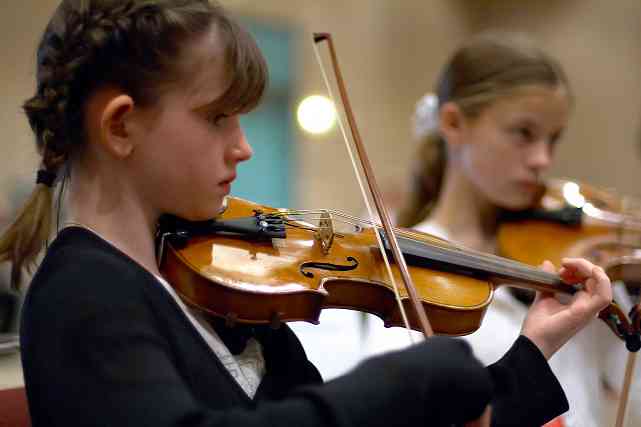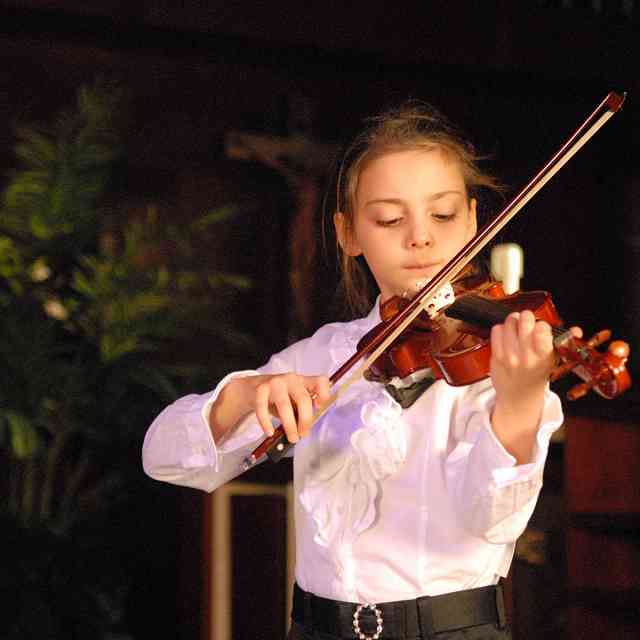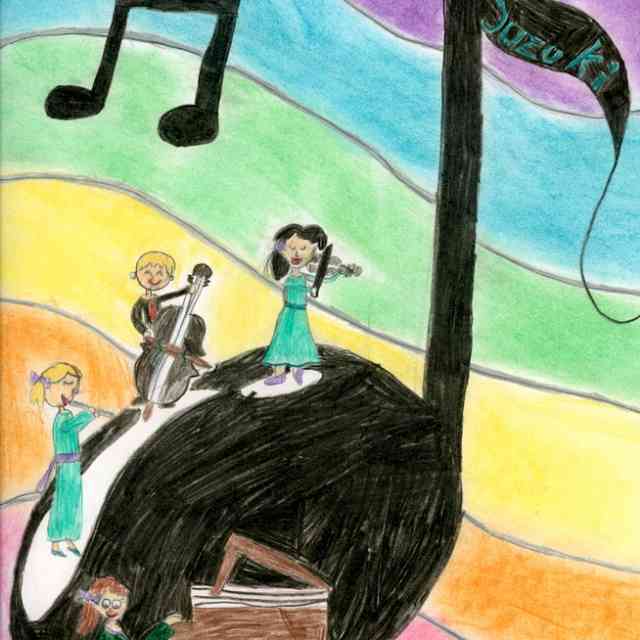“Tone has a living soul without form.”
We have all heard this quote by Dr. Suzuki, but what does it mean?

SYOA rehearsal at the 2006 SAA Conference
Think of an electronic keyboard, one that has many different instrument settings. Have you listened to the violin setting? A keyboard I use on occasion has a violin setting, but it does not sound like the violin I know and love. It sounds too electronic, too machine-like. This synthesized tone lacks the personal touch. It lacks the “soul” that a human violinist has.
That is what tone is: the sound you make on the violin that gives your playing its distinguishing characteristics. If you listen to a recording of any famous violinist, you will hear his distinctive sound. If you listen to that same violinist enough, you will be able to recognize his sound anywhere. I believe that what “tone has a living soul” means is that tone is what makes each of us unique and human in our playing.
So how do we make tone the most important thing in our music? Without a beautiful human tone, we will sound too much like that electronic keyboard. It is easy to get carried away with notes, rhythm and bowings. The hard part is focusing on your tone, figuring out the sound you want to have for each phrase of each piece in order to make exceptional music.
I have had some teachers in the past who focused on tone more than others. One teacher in particular was most concerned about rhythm and intonation. She would plunk away on the piano to try to get me to match pitches. She never really taught me to listen to my own playing, however, which might have helped more.
A later teacher seemed more concerned with my ability to produce a great volume. I worked for months on sustaining my sound through my whole bow. It seemed that each week she insisted I play louder than before, until one day I finally achieved the volume she wanted, or rather, the ability to play at the volume she wanted. During this time, the more I listened to my tone and to the sound I was producing, the more I was aware of the ring from each note. As a result, my intonation began to improve.
The last teacher I studied with definitely made tone a priority. With him, I felt the goal was to have the most beautiful tone possible, the sort of tone that makes people spontaneously burst into tears. I certainly burst into tears enough after my lessons as I struggled to play as beautifully as he did! During those lessons I learned how to listen to my tone with great focus and concentration. I focused on how to use my bow and vibrato to make my violin produce exactly the sound and phrasing I wanted for each piece.
As the years passed after I left school, my practicing became more sporadic and less focused. Without weekly lessons, I would only practice to learn a specific piece for an audition or concert. I paid more attention to my rhythm and intonation than my sound production, conveniently forgetting the connection between tone and intonation.
Recently I played for a violinist who told me that I played very nicely in tune and with good rhythm, but I needed to “rip out my soul and attach it to my bow arm.” At the time, this made me very upset. How dare he suggest my playing lacked soul? Were my technical achievements worth nothing? After I thought about his comments further, I realized that I had been so focused on perfecting my technique that I had forgotten to use my own voice, my own tone…my own soul!
Since then, I have tried to change how I practice and play. With each phrase, I try to produce a tone that has a soul, a tone that fits what I feel in the music, so that I may convey that emotion to the audience. How do I do this? By really listening to myself play, listening with as much concentration as I can muster, and listening to the ring of each note I produce. I feel good knowing that I am making my tone a priority again, with the added benefit that I am enjoying my practice sessions more than I have in years!










